By Jeff Cummins, Butterfly Rearing Coordinator at HMNS
It’s the beginning of April, spring is in full swing, and I’ve seen the first of the migrant monarch butterfly (Danaus plexippus) females searching my garden for milkweed on which to lay their eggs. I know these are migrants, meaning they are the same individuals that spent the winter in the mountains of central Mexico, because they are all female (most males don’t survive past maiting) and they’re looking a little rough… their wings are tattered and are a dull pale orange having lost their vibrancy from the 6 to 8 months of flying from as far north as Canada all the way to a few special mountains around Mexico City and then back Texas.
I was lucky enough to be able to visit a few of the roosting sites in Mexico where they overwinter earlier this year in February. This had been on my bucket list for as long as I had known of the monarchs and this wonder of the natural world.
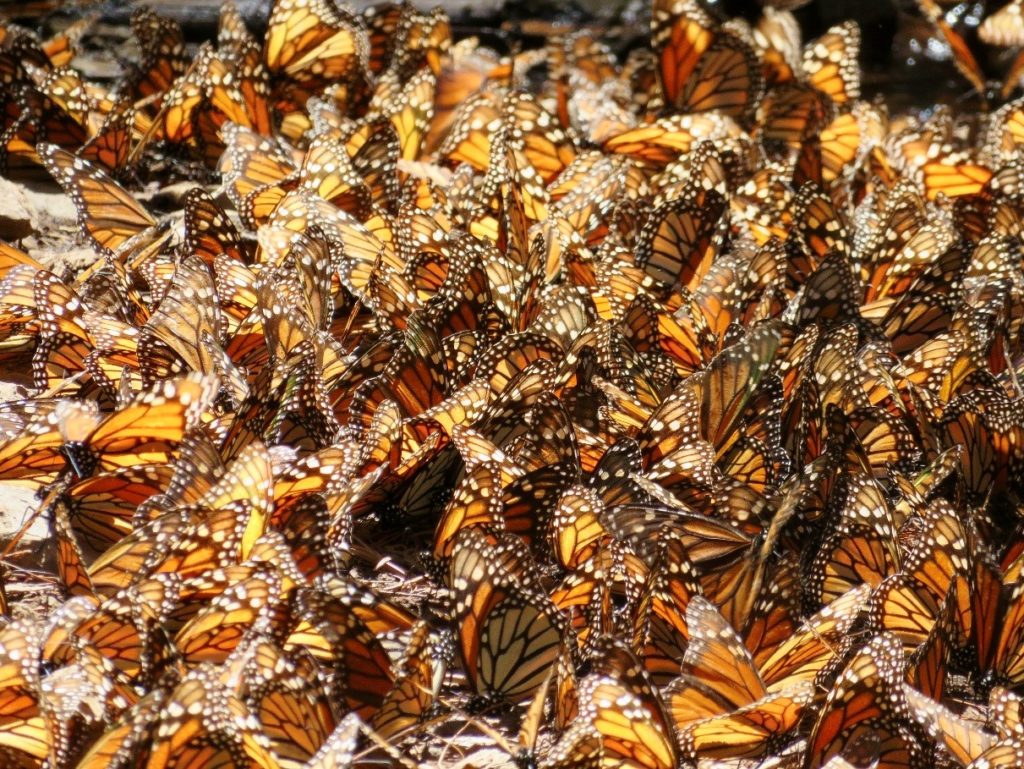
Mass of monarchs “puddling” from wet soil around streams. Puddling is the term used when butterflies drink water and minerals from areas of damp sand or soil.
I spent a couple of days in Mexico City (which is fabulous by the way), and several days in a few smaller towns outside of the city and closer to the butterfly sanctuaries. Although I was scheduled to visit three sanctuaries, I was only able to see two as one was closed due to “unsafe conditions” according to my guide, whatever that means… But this was more than enough to blow me away! I was lucky to have booked my trip before knowing that this was to be the year with the highest population of overwintering monarchs in over a decade!
The first sanctuary I went to is the biggest and most visited, El Rosario. It was definitely the more “touristy” of the two I saw, but that’s not to say that it wasn’t an incredible experience. Before even arriving at the gates of the park, monarch butterflies were swarming everywhere! On an average year, according to our guide, one has to hike for at least an hour up the mountain before spotting your first butterfly, but because of the unusually large population and a warmer than normal winter they were much lower on the mountain and much more active.
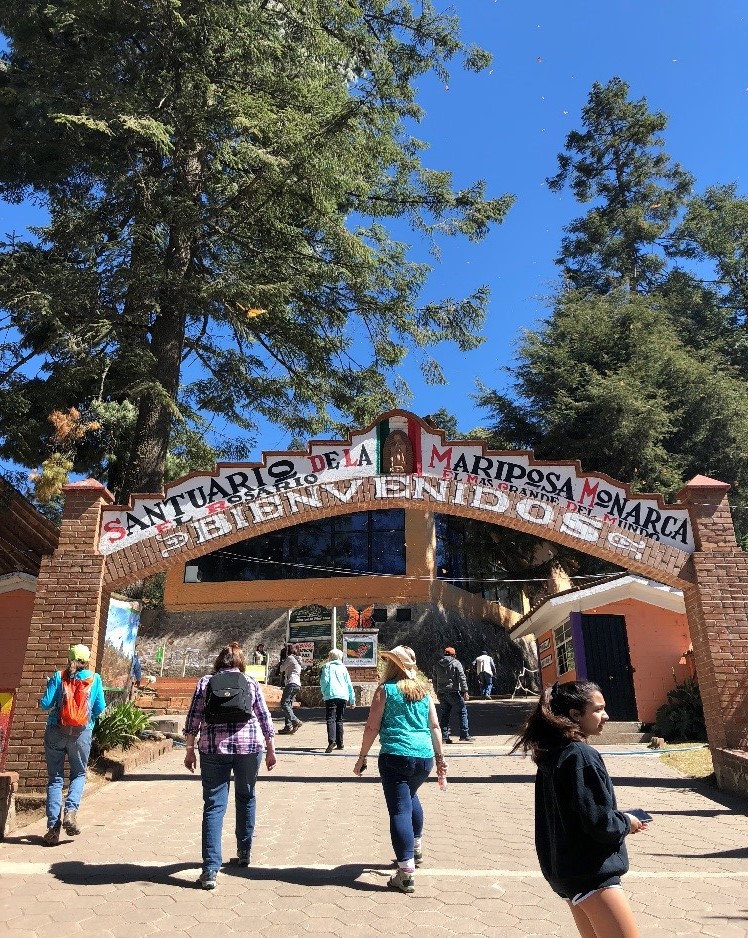
Entrance to El Rosario
Literally millions of butterflies draped the trunks and bent the branches of the Oyamel Fir trees, Abies religiosa, under their weight in a scene that photos simply can’t do justice to. At the warmest part of the day the butterflies depart the trees in search of nectar and water from the forest floor. As a plant person, I was really surprised at the abundance of flowering plants (mostly Salvia species and many different types of plants in the aster family, Asteraceae) in the forest.
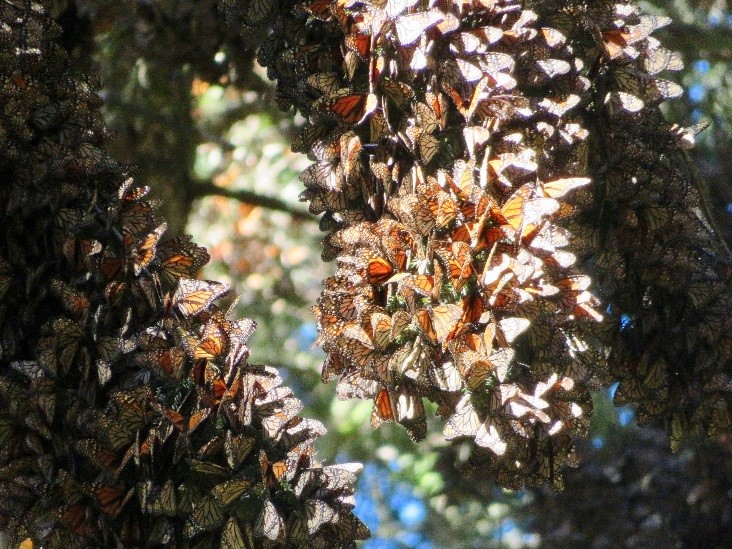
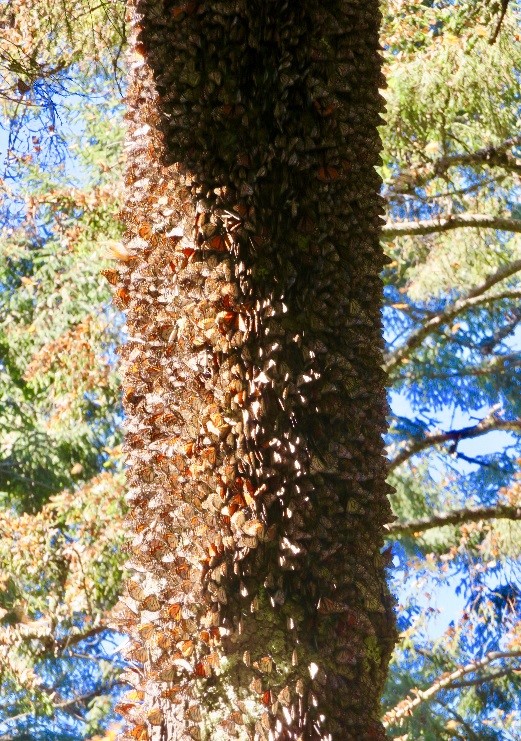
Asteraceae (and hoverfly).

Asteraceae (and hoverfly).

Salvia sp.
SSince little hiking was required and the butterflies were everywhere instead of in more remote parts of the park, our guide allowed us to meander and take our time. Normally a visitor’s time is restricted to only 20 minutes to accommodate the number of visitors and not to impose upon the wellbeing of the butterflies. Once finished at the sanctuary there is an opportunity to do some shopping and get lunch from local vendors.
The second site I visited was by far my favorite, Sierra Chincua. Although it still caters to tourists the park had a far more “authentic” feel to me. It is very remote compared to El Rosario, requiring a several hour and very bumpy bus ride through beautiful countryside and up perilous mountain passes. The population of monarchs was smaller at this sanctuary and also more difficult to get to. One could either hike for a couple of hours or hire a horse. As this was the fourth day of the trip my group opted for the horses.
Sierra Chincua is just gorgeous! The air was crisp and cool and the flora of the park was pristine and abundant. I was wracking my brain trying to identify all the plants I had never met before, but I had to remind myself that this was a vacation so I put my botanist hat away and just enjoyed the scenery. After about half an hour on the horse it took another 30 minutes to hike to the roosting site of the monarchs. As it was cooler here they were less active than at El Rosario, but there were still several thousand flying all around me and visiting the flowers and even more clustered together high up in the trees.
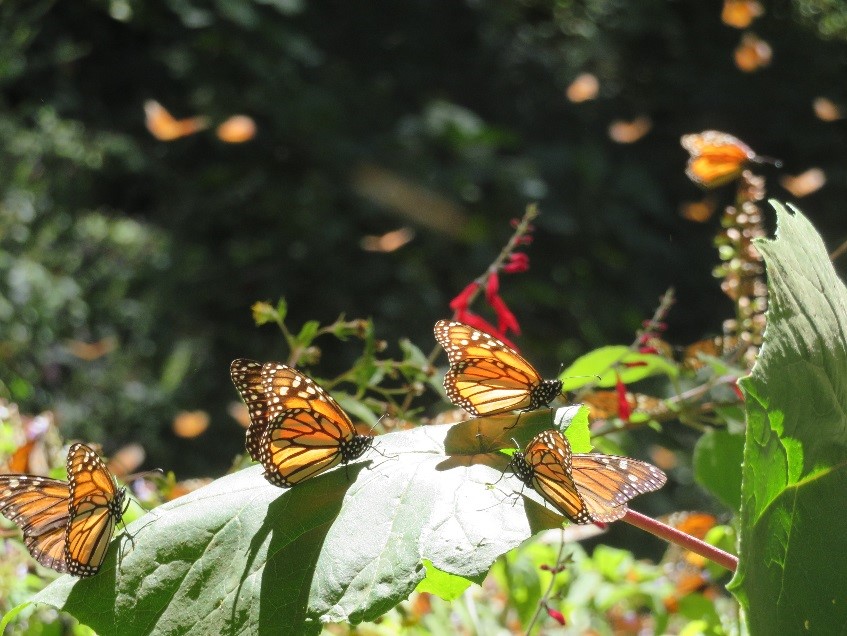

Thanks to favorable conditions east of the Rocky Mountains, this was a bumper year for North American monarchs that overwinter in Mexico, but the western population crashed. It just goes to show how fragile their numbers can be that natural disasters like the drought and fires in California almost wiped out the entire western population.
The global conservation status for the species is listed as “apparently secure” which is one step above threatened, so the species as a whole is probably not at risk for extinction any time soon. In fact they have been introduced to other areas around the world where they have established breeding populations and are considered an invasive species! Also a lot of people in North America aren’t aware that there is a subspecies of monarch, Danaus plexippus megalippe, found in the Caribbean and parts of South America that does not undergo any sort of migration. However, as exhibited by the crash of the Western migration this year, the migrating monarch populations of North America that have become so famous are at risk.

Danaus plexippus megalippe from Colombia (photo by Sebastián Aguirre)
Danaus plexippus megalippe from Colombia (photo by Sebastián Aguirre)
My trip to Mexico was an amazing experience that I wish more people could experience so that they could appreciate these amazing insects and therefor do more to help not just them but all wildlife. To read about it or to watch documentaries is one thing, but to see it in person is to really appreciate the journey these tiny fragile animals undergo each year.
So what’s in store for the monarchs this season? Well, only time will tell, but according to Monarchwatch.org the sightings of monarchs migrating north is the highest for the first 10 days of March since records have been kept starting in 2000. But it all depends on the conditions they face this summer and in the fall when the begin migrating back to Mexico. Chip Taylor, of Monarchwatch, says he is “cautiously optimistic” for another record breaking year!
And if you want to help the monarchs along on their long journey north this spring, planting milkweed, the monarch’s preferred host plant to lay their eggs on, is a great way to help!
You can buy milkweed at the Cockrell Butterfly Center’s Spring plant Sale, which will be held on Saturday, April 6th in front of the Houston Museum of Natural Science’s main entrance.






